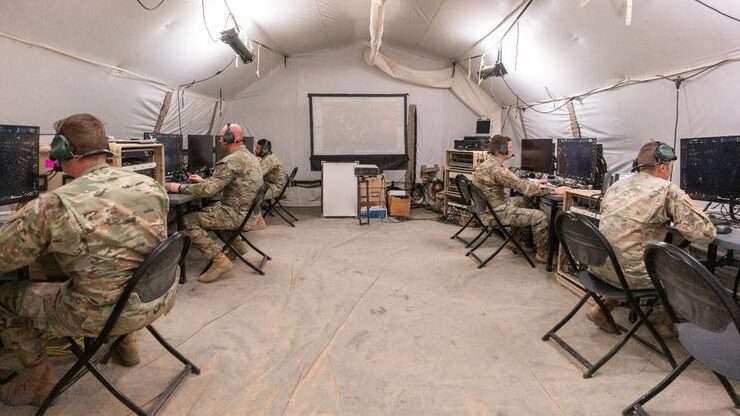
DSEI 2023 — Fresh off US approval for potential new sales of its battle network system to Poland, Northrop Grumman is making a push to expand the use of the system with allies and partners elsewhere in Europe.
The platform in question, the Integrated Air and Missile Defense Battle Command System (IBCS), is currently a US Army program of record. Its basic function, and the premise for a broader vision that company executives have outlined as “BattleOne,” is to bring together information in real time from all sensors and shooters across a battlefield to be made viewable by any service, ally or partner.
RELATED: Peraton developing ‘single-pane-of-glass’ visibility across Army’s unified network
The system is in full rate production with the US Army, and Poland has reached “basic operational capability,” according to Jon Ferko, senior director for mission solutions and strategy, at Northrop — another way to say the country has some level of combat capability on the ground. Poland received its first contingent of six IBCS “Engagement Operations Centers” in July 2022, the company previously said.
Now, Northrop wants to expand the system’s reach with other European nations.
“With the achievements that the US Army has reached… our allies and partners [are] watching Poland to see the progress made there, we’re seeing a lot more demand from Europe across the board,” said Ian Reynolds, a senior Northrop executive overseeing C4 missile defense.
Reynolds added the company in May conducted a classified demonstration in Germany for several nations, including the United Kingdom, Germany, Sweden, Denmark, the Netherlands and Romania.
IBCS’ function of connecting disparate sensors and shooters together into a single information stream also aims at the heart of the Pentagon’s joint battlefield communications effort, dubbed Joint All Domain Command and Control. While the services each have unique programs — the Army’s Project Convergence, the Navy’s Project Overmatch, the Department of the Air Force’s Battle Network— the core element to all of them is the goal of real-time, critical data sharing and analysis.
Separately on Monday, the State Department announced it had approved further foreign military sales to Poland related to IBCS worth up to $4 billion. The potential sale includes dozens more engagement operations centers, fire control network relays, network encryptors as well as associated integration and support work.
“This proposed sale will support the foreign policy goals and national security objectives of the United States by improving the security of a North Atlantic Treaty Organization Ally that is a force for political stability and economic progress in Europe,” according to the announcement.
“The proposed sale will improve Poland’s missile defense capability and contribute to Poland’s goal of updating its military capability while further enhancing interoperability with the United States and other allies. Poland will have no difficulty absorbing this equipment into its armed forces,” the announcement continues.